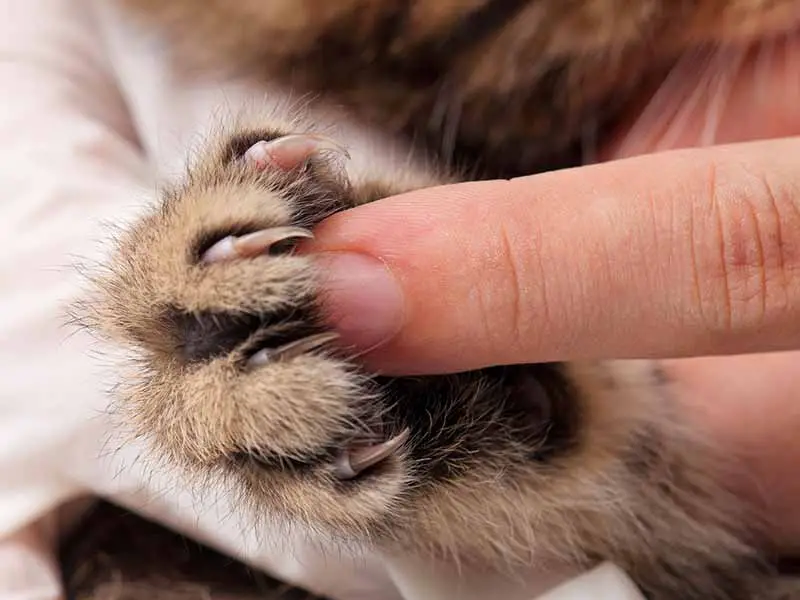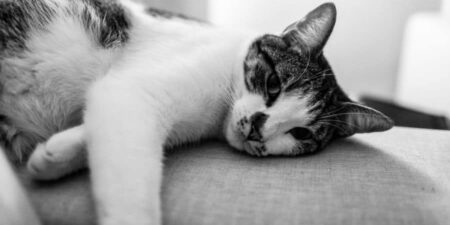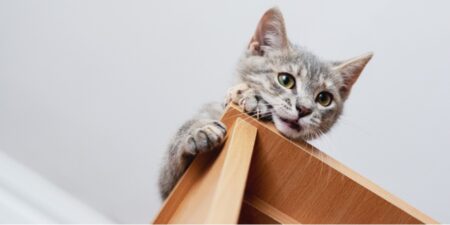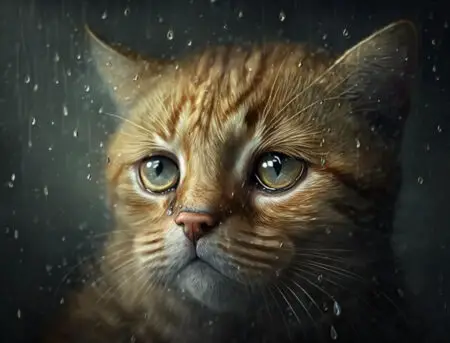Declawing cats has been a controversial topic for many years. Some people believe it’s a necessary procedure to protect furniture and owners from scratches. However, there is a growing body of evidence suggesting that declawing is an inhumane practice, causing unnecessary pain and suffering for our feline friends.
Let’s explore the reasons why declawing is a cruel and harmful procedure and provide some alternatives to help protect your home without harming your cat.
What Does Declawing Involve?
To begin with, it’s important to understand what declawing entails.
This procedure, also known as onychectomy, involves surgically removing a cat’s claws along with the bones they are attached to.
This is comparable to amputating a human’s fingers at the last knuckle.
Here’s what the procedure entails:
- Anesthesia – Declawing is a painful procedure, so the cat is first put under general anesthesia to ensure they do not feel pain during the surgery.
- Amputation – The veterinarian will amputate the last bone (distal phalanx) of each of the cat’s toes, to which the claws are attached to. This is comparable to removing a human’s fingertips at the last knuckle. There are different methods to perform this surgery, including using a scalpel, guillotine-type nail trimmer, or laser. Regardless of the method, the goal is to remove the entire bone and claw without leaving any remnants.
- Wound closure and bandaging – After the amputation, the veterinarian will close the wounds using stitches or surgical glue, depending on the method used. The cat’s paws are then bandaged to protect the incisions and minimize bleeding.
- Recovery – Following the surgery, the cat will need time to recover. They may be given pain medications and antibiotics to help manage pain and prevent infection. The cat must be closely monitored during this period, as it may experience pain, discomfort, or difficulty walking. It’s crucial to follow the veterinarian’s recommendations for post-operative care to ensure a smooth recovery process.
It’s essential to understand that declawing is an invasive and painful procedure with several potential negative effects on a cat’s physical and emotional well-being.
As a result, many veterinarians and animal welfare organizations discourage declawing and recommend exploring alternative solutions to address scratching behaviors.
7 Harmful Effects That Declawing Has on Cats
As you can imagine, this is an extremely painful procedure that can lead to long-lasting physical and psychological effects on the cat.
Here are seven harmful effects:
1. Pain and Discomfort
Declawing is an invasive procedure that causes significant pain for the cat.
The recovery process can be painful, and cats may continue to experience chronic pain or discomfort in their paws long after the surgery.
When a cat’s claws are removed, it can cause nerve damage and discomfort in its paws.
Cats may experience pain when walking, jumping, or even just standing still.
This constant pain can lead to a decline in a cat’s overall quality of life.
Cats use their claws to groom themselves, and without them, they may struggle to keep clean.
This can result in skin infections or other hygiene-related issues.
2. Behavioral Changes
Declawing can lead to a variety of behavioral issues.
Cats may become more anxious or aggressive due to losing their primary defense mechanism.
Without their claws, cats may feel vulnerable and insecure about threats from other animals or their environment.
Declawed cats may struggle to climb, escape from danger, or defend themselves from other animals.
This can lead to increased aggression or anxiety, making them more likely to bite or spray as a form of defense.
They might resort to biting as a new form of defense.
In addition, some cats may become less active or playful due to the discomfort they experience.
Some cats may also become depressed or less playful after the procedure due to the pain they experience.
3. Difficulty in Walking and Jumping
Cats use their claws for balance and grip when walking or jumping.
After declawing, cats may have difficulty with these activities, which can lead to a decrease in their mobility and overall quality of life.
4. Litter Box Issues
Cats may avoid using the litter box after declawing because the action of digging in the litter can cause pain in their sensitive paws.
This can lead to inappropriate elimination behaviors, such as urinating or defecating outside the litter box.
5. Health Problems
Declawing a cat can create other health problems.
Cats use their claws to groom themselves, and without them, they may struggle to keep clean.
This can result in skin infections or other hygiene-related issues.
The declawing procedure itself also carries risks, such as infection or complications from anesthesia.
6. Complications from Surgery
As with any surgical procedure, there are risks associated with declawing, such as infection, excessive bleeding, or complications from anesthesia.
Additionally, if the surgery is not performed correctly, bone fragments may be left behind, causing further pain and complications for the cat.
7. Loss of Natural Behavior
Scratching is a natural behavior for cats, helping them stretch their muscles, mark their territory, and maintain the health of their claws.
Declawing deprives them of this instinctive activity, which can negatively affect their well-being.
The Truth About Declawing Your Cat (Video)
4 Humane Alternatives
While it’s true that cats can sometimes cause damage to furniture or accidentally scratch their owners, there are more humane alternatives to declawing.
Here are four suggestions:
1. Regularly Trim Your Cat’s Claws
By keeping their nails short, you can minimize the damage they can do to furniture and reduce the risk of scratches to yourself or others.
2. Provide Scratching Posts
Cats have a natural instinct to scratch. By giving them appropriate scratching surfaces, you can redirect this behavior away from your furniture.
3. Use Nail Caps
Soft nail caps can be glued onto your cat’s claws, preventing them from causing damage without removing the claw itself.
These caps need to be replaced periodically as your cat’s nails grow.
4. Train Your Cat
With patience and positive reinforcement, you can teach your cat not to scratch furniture or people.
This may take time, but it’s a far more humane option than declawing.
Summary
Declawing is an inhumane practice that causes unnecessary pain and suffering for cats.
Numerous alternatives can protect your home and your family without resorting to such a cruel procedure.
Choosing these alternatives will ensure that our feline companions live happy, healthy lives without the physical and psychological burdens associated with declawing.
The Painful Truth About Declawing Cats (Video)
"In ancient times cats were worshipped as gods; they have not forgotten this."
-- Terry Pratchett






I could never do that to my cat! For many years I have shared my home with my feline friends. My furnishings are well used and comfortable. I know they love me; and wouldn’t hurt me either.